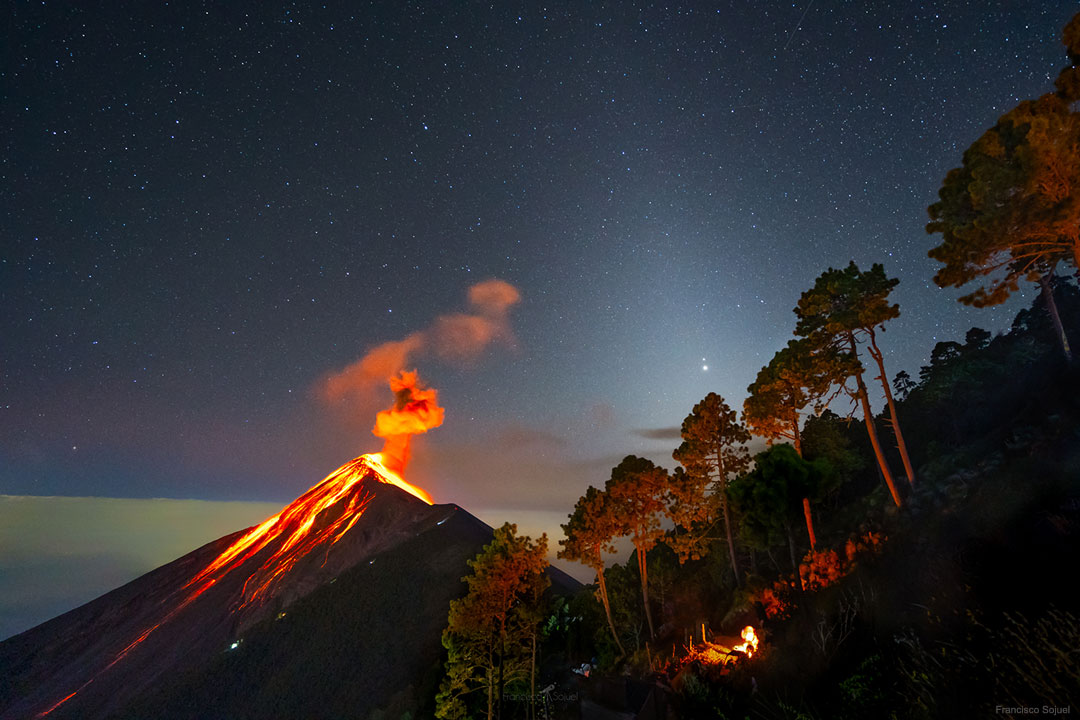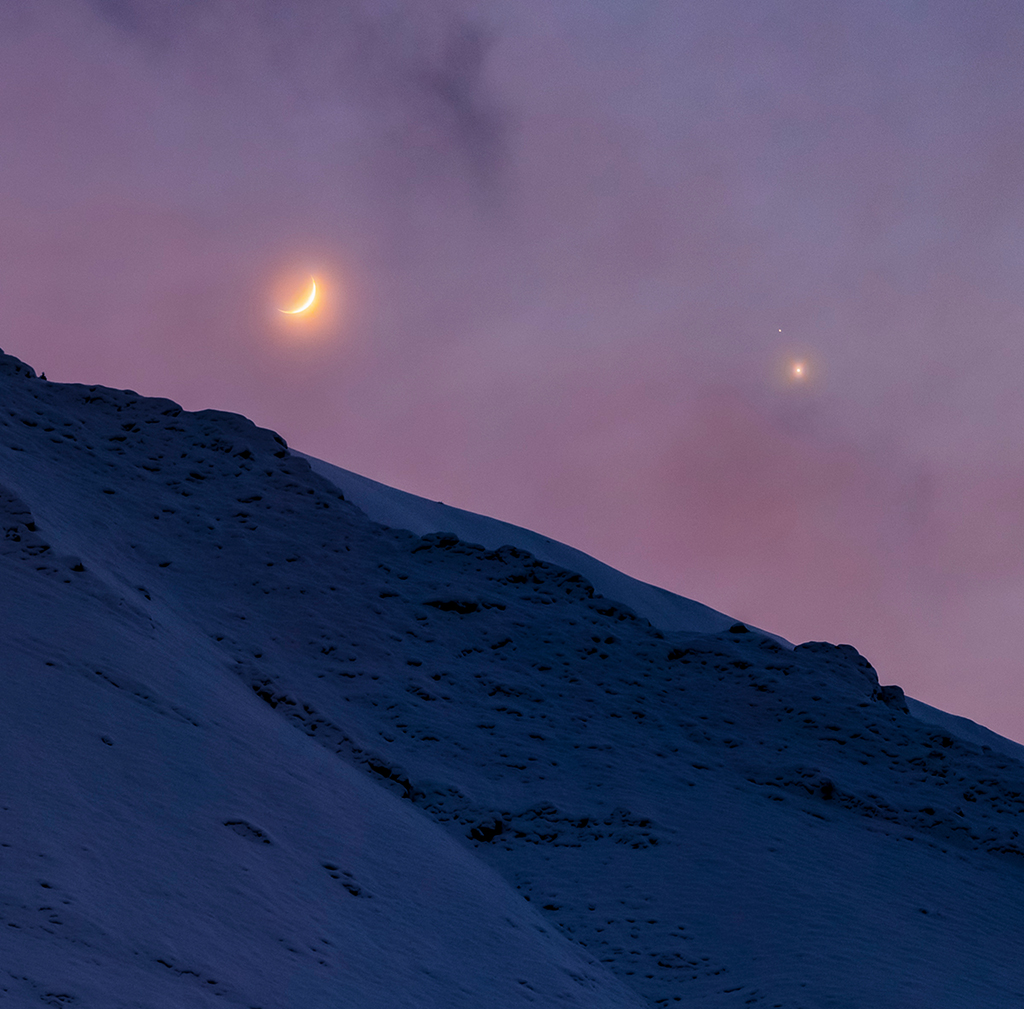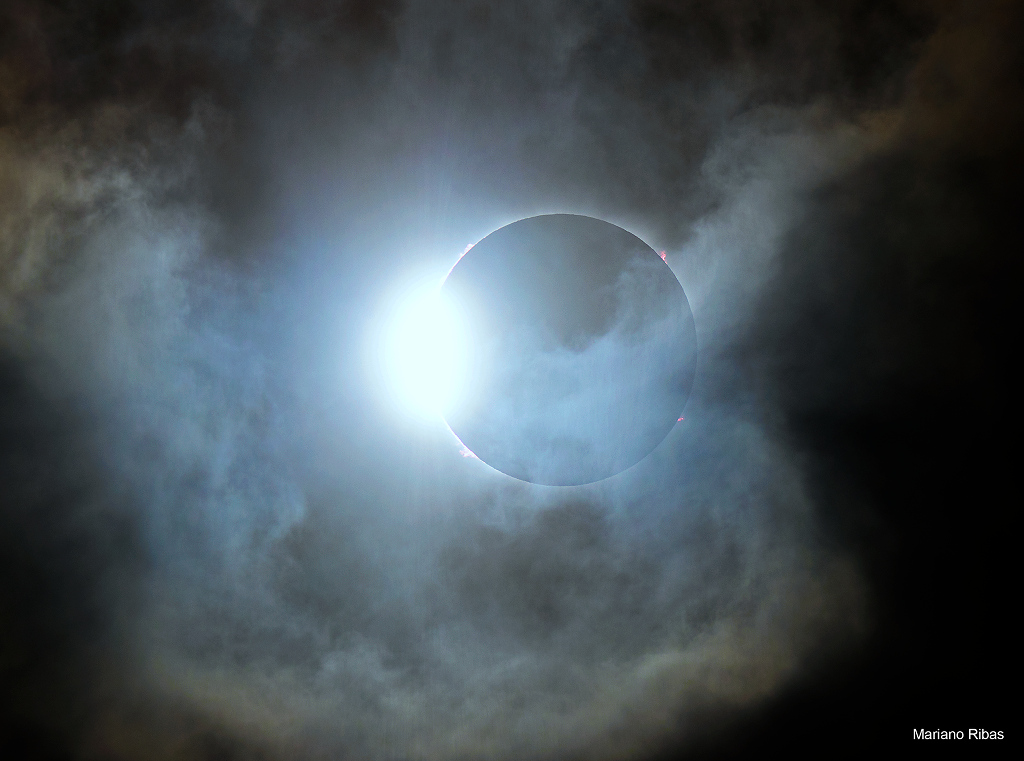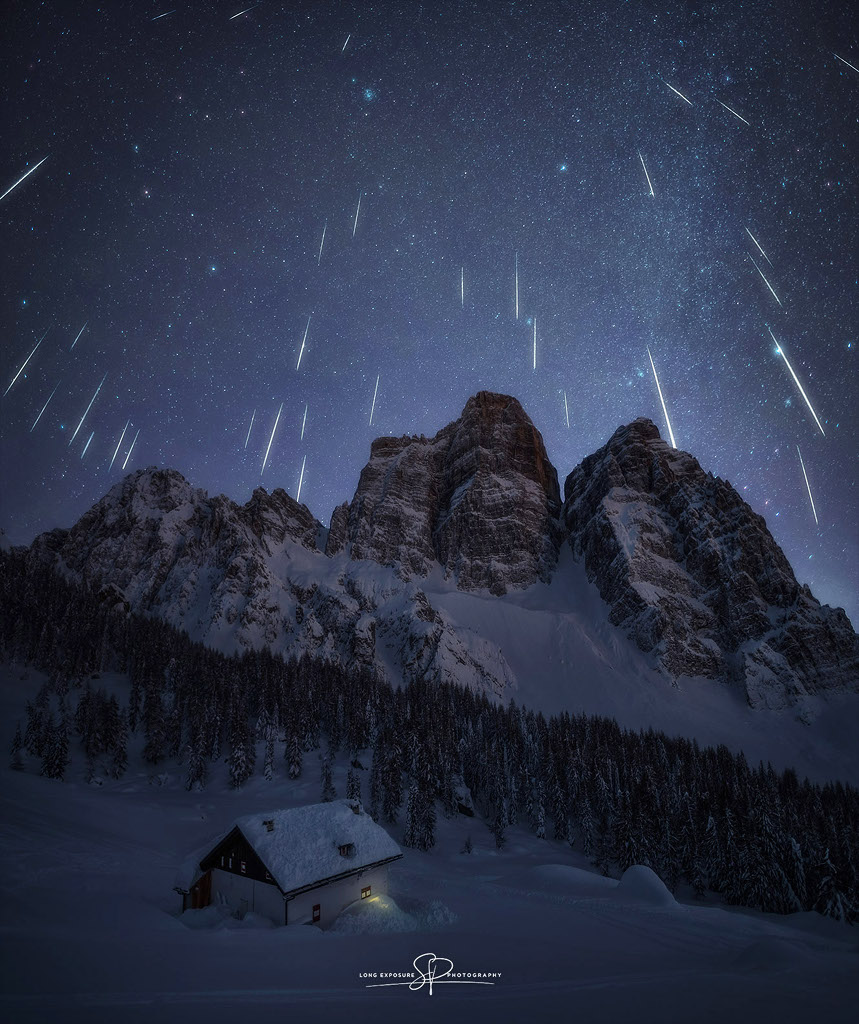Nombre total de pages vues
27/12/2020
Coronavirus : oui, on peut laver son masque jetable
21/12/2020
20/12/2020
VOLCANOLOGY - A Volcanic Great Conjunction
2020 December 20
Image Credit & Copyright: Francisco Sojuel
Explanation: Where can I see the Great Conjunction? Near where the Sun just set. Directionally, this close passing of Jupiter and Saturn will be toward the southwest. Since the planetary pair, the Sun, and the Earth are nearly in a geometric straight line, the planets will be seen to set just where the Sun had set -- from every location on Earth. When can I see the Great Conjunction? Just after sunset. Since the two planets are so near the Sun directionally, they always appear in the sky near the Sun, but can best be seen when the Earth blocks the Sun but not the planets: sunset. Soon thereafter, Jupiter and Saturn will also set, so don't be late! Is tomorrow night the only night that I can see the Great Conjunction? Tomorrow night the jovian giants will appear the closest, but on any night over the next few days they will appear unusually close. Technically, the closest pass happens on 21 December at 18:20 UTC. Will there be an erupting volcano on the horizon near the Great Conjunction? Yes, for example if you live in Guatemala where the featured image was taken. Otherwise, generally, no. In the featured image captured last week, Jupiter and Saturn are visible toward the right, just above a tree, and bathed in the diffuse glow of zodiacal light.
19/12/2020
ASTRONOMY - Conjunction after Sunset
2020 December 19
Image Credit & Copyright: Alireza Vafa
Explanation: How close will Jupiter and Saturn be at their Great Conjunction? Consider this beautiful triple conjunction of Moon, Jupiter and Saturn captured through clouds in the wintry twilight. The telephoto view looks toward the western horizon and the Alborz Mountains in Iran after sunset on December 17. The celestial gathering makes it easy to see Jupiter and fainter Saturn are separated on that date by roughly the diameter of the waxing crescent Moon. On the day of their Great Conjunction, solstice day December 21, Jupiter and Saturn may seem to nearly merge though. In their closest conjunction in 400 years they will be separated on the sky by only about 1/5 the apparent diameter of the Moon. By then the two largest worlds in the Solar System and their moons will be sharing the same field of view in telescopes around planet Earth.
18/12/2020
ASTRONOMY - Diamond in the sky
2020 December 18
Image Credit & Copyright: Mariano Ribas (Planetario de la Ciudad de Buenos Aires)
Explanation: When the shadow of the Moon raced across planet Earth's southern hemisphere on December 14, sky watchers along the shadow's dark central path were treated to the only total solar eclipse of 2020. During the New Moon's shadow play this glistening diamond ring was seen for a moment, even in cloudy skies. Known as the diamond ring effect, the transient spectacle actually happens twice. Just before and immediately after totality, a thin sliver of solar disk visible behind the Moon's edge creates the appearance of a shiny jewel set in a dark ring. This dramatic snapshot from the path of totality in northern Patagonia, Argentina captures this eclipse's second diamond ring, along with striking solar prominences lofted beyond the edge of the Moon's silhoutte.
17/12/2020
ASTRONOMY - Gemini's Meteors
2020 December 17
Image Credit & Copyright: Stefano Pellegrini
Explanation: Taken over the course of an hour shortly after local midnight on December 13, 35 exposures were used to create this postcard from Earth. The composited night scene spans dark skies above the snowy Italian Dolomites during our fair planet's annual Geminid meteor shower. Sirius, alpha star of Canis Major and the brightest star in the night, is grazed by a meteor streak on the right. The Praesepe star cluster, also known as M44 or the Beehive cluster, itself contains about a thousand stars but appears as a smudge of light far above the southern alpine peaks near the top. The shower's radiant is off the top of the frame though, near Castor and Pollux the twin stars of Gemini. The radiant effect is due to perspective as the parallel meteor tracks appear to converge in the distance. As Earth sweeps through the dust trail of asteroid 3200 Phaethon, the dust that creates Gemini's meteors enters Earth's atmosphere traveling at about 22 kilometers per second.
ASTRONOMY - Orion and the Ocean of Storms
2025 December 13 Orion and the Ocean of Storms Image Credit: NASA , Artemis 1 Explanation: On December 5, 2022, a camera on board the u...

-
2022 September 26 All the Water on Planet Earth Illustration Credit: Jack Cook, Adam Nieman, Woods Hole Oceanographic Institution ; Data ...
-
2025 May 11 The Surface of Venus from Venera 14 Image Credit: Soviet Planetary Exploration Program , Venera 14 ; Processing & Copyri...







